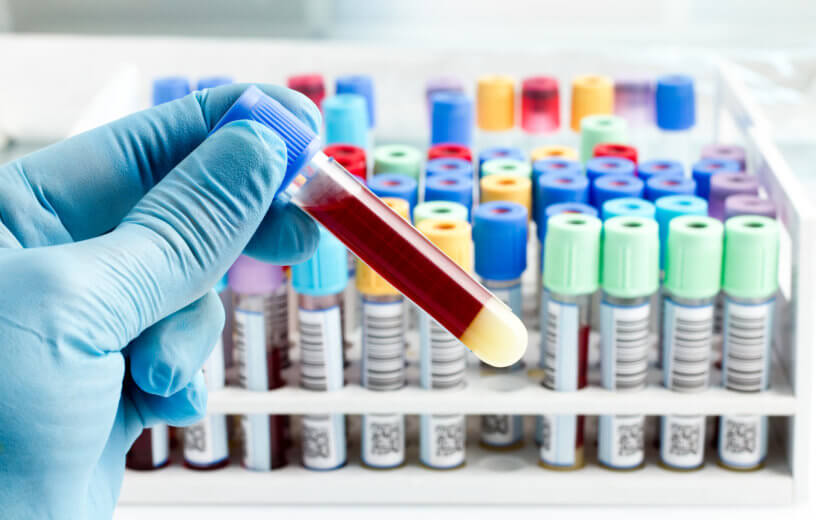VIENNA — A “liquid biopsy” blood test that will detect childhood cancers leading to personalized treatment has been developed by scientists. The method, doing away with surgery, checks whether patients have bits of tumor DNA in their blood and uses them to monitor how they respond to treatment, according to a new study.
Cancer cells in tumors are constantly dividing, but some of them die in the process and release bits of DNA into the bloodstream. By analyzing these genetic fragments, doctors can diagnose and monitor the tumor’s development.
Liquid biopsies, sampling and analyzing bodily fluids, are far less invasive than conventional tumor biopsies, which often require surgery. But using this method in children has proven difficult as few of the tumor’s genetic alterations are detectable in floating bits of DNA. Now scientists have come up with a new way of tracking these changes which could improve diagnosis and, in the long run, treatment.
“We previously identified unique epigenetic signatures of Ewing sarcoma,” says lead author Dr. Eleni Tomazou, of the St. Anna Children’s Cancer Research Institute in Austria, in a statement. “We reasoned that these characteristic epigenetic signatures should be preserved in the fragmentation patterns of tumor-derived DNA circulating in the blood. This would provide us with a much-needed marker for early diagnosis and tumor classification using the liquid biopsy concept.”
A rare type of bone cancer known as Ewing sarcoma, which mainly affects children and young adults, was studied by the researchers. They discovered the size of fragments circulating in the blood was not random or solely determined by the DNA sequence. Rather, it depended on how the DNA was packaged inside the cancer cells and their epigenetic profile.
A cell’s epigenetic profile refers to which genes are turned on by interactions between its DNA and a substance called chromatin. These epigenetic patterns, sometimes referred to as the “second code” of the genome, are distinctive for different cell types in the human body. Analyzing them allowed the researchers to monitor epigenetic regulations inside the tumor itself without having to perform surgery. This means doctors will be able to test for cancer without knowing whether there is a tumor in their patient’s body and where it is.
The researchers have also benchmarked various metrics to help doctors analyze the DNA fragments. This includes an algorithm dubbed “LIQUORICE” which detects circulating tumor DNA in the blood and therefore whether a patient has cancer.
“By feeding these machine learning algorithms with our extensive whole genome sequencing data of tumor-derived DNA in the blood stream, the analysis becomes highly sensitive and in many instances outperforms conventional genetic analyses,” explains Dr. Tomazou
The new approach could improve cancer diagnosis and lead to the development of personalized forms of therapy, although more research is still needed.
“Our assay works well, we are very excited,” adds Dr. Tomazou. “However, further validation will be needed before it can become part of routine clinical diagnostics.”
It could also be used to determine which patients are responding to treatments such as chemotherapy, allowing doctors to adjust their doses.
“Right now, most patients receive very high doses of chemotherapy, while some patients may be cured already with a less severe therapy, which would reduce their risk of getting other cancers later in life,” says Dr. Tomazou. “There is a real medical need for adaptive clinical trials and personalized treatment of bone tumors in children.”
The findings are published in the journal Nature Communications.
Report by SWNS writer Tom Campbell.
